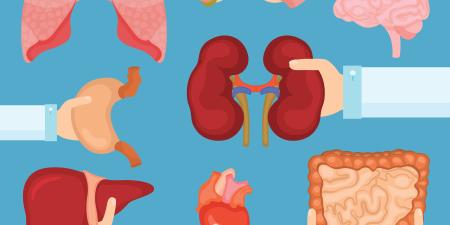Patient satisfaction is top of mind today for most health care organizations, from hospitals to physician practices to home health care agencies. Not only do a majority of senior health care executives have compensation tied to patient satisfaction scores, but hospital reimbursement is also being directly affected by inpatient satisfaction ratings as a part of the Centers for Medicare and Medicaid Services (CMS) value-based purchasing program and private payer initiatives.
History of Patient Satisfaction in Health Care
It was certainly not always so. When Notre Dame professors Irwin Press, PhD, a medical anthropologist, and Rod Ganey, PhD, a sociologist and statistician, started Press Ganey in 1985, they essentially created a new market. They brought the science of sound survey design and administration to health care.
Press Ganey started out with just a handful of hospital clients. Each year over the next decade and a half, more and more hospitals saw the value that could be gained from tracking their patients’ satisfaction and comparing it with that of other similar organizations. The number of companies providing services correspondingly grew to include such firms as NRC, Gallup, HealthStream, PRC, and Avatar.
During that same period, the survey’s subject sites expanded from inpatient units to emergency, outpatient, ambulatory surgery, and medical practice departments, as well as other areas. The sophistication of data collection, analysis, and reporting continued to increase. Survey companies began to offer health care organizations advice on how to improve their satisfaction scores after the surveys had been administered and analyzed.
The federal government first became active in patient satisfaction in 2002 [1]. That year CMS and the Agency for Healthcare Research and Quality (AHRQ) collaborated to research, develop, and test the Hospital Consumer Assessment of Healthcare Providers and Systems (HCAHPS) survey. HCAHPS is a standardized 27-question survey administered randomly by approved vendors or the hospital to adult hospital inpatients after discharge.
After an extensive review process that included multiple opportunities for public comment, the HCAHPS survey was approved by the National Quality Forum in October 2005 and implemented by CMS in October 2006. The first public reporting of HCAHPS results occurred in March 2008, with voluntary reporting by hospitals.
As part of the Deficit Reduction Act of 2005, hospitals received a financial incentive (i.e., pay for reporting) for participating in HCAHPS starting in 2007 [1]. Not surprisingly, eligible hospital participation rose to nearly 95 percent that year [2]. These financial incentives were strengthened through the Affordable Care Act of 2010, under which hospital Medicare reimbursement (i.e., pay for performance) was influenced by comparative performance and improvement on HCAHPS [1]. Since HCAHPS results were first made publicly available, hospital scores overall have consistently increased with each new release of HCAHPS data [3-9].
Myths and Misperceptions
With patient satisfaction assuming such a prominent role in health care, a number of myths and misperceptions about it have arisen. The rest of this article explores some of those myths and their implications.
Myth #1: Very few patients fill out satisfaction surveys. In most industries, the average response rate to customer satisfaction surveys is relatively low. The response rates in health care are substantially higher, most likely due to the relative importance of the health care experience compared to experiences with non-health-related products or services.
On the HCAHPS national results for hospital inpatient care covering patient surveys for the 12-month period of October 2011 through September 2012 [10], the average hospital response rate was 32 percent. Three-quarters of the hospitals had response rates greater than 27 percent, and one-quarter exceeded a 37 percent response rate.
Myth #2: Patients who fill out surveys are generally unhappy with their care.While this may be the case in non-health care industries, it is decidedly not true in health care. In the most recent HCAHPS national results, 70 percent of responding patients rated their hospitals 9 or 10 overall (often referred to as “top box”) on a scale of 0 to 10 [10]. As impressively, 92 percent of responding patients rated their hospitals a 7 or higher [10]. This positive experience led 71 percent of patients nationally to say they would definitely recommend the hospital to friends and family; 95 percent would probably or definitely recommend the hospital to friends and family [10].
Patients are particularly pleased with the communication from nurses and doctors. In the most recent HCAHPS results, 78 percent of patients said their nurses always communicated well, and 81 percent indicated that their doctors always communicated well [10].
While it does vary from one hospital to another, in general, respondents are happy with the care they receive.
Myth #3: Only very unhappy or happy patients make comments on their surveys. Patient comments may be one of the most useful aspects of a patient satisfaction survey. While numerical ratings are important, the comments can provide deeper insights for the hospital into what is leading to high or low ratings. If only very unhappy or very happy patients were to add comments, then the comments could be misleading. However, this is not the case. According to a Press Ganey analysis of client hospital data for 2010, almost half of responding patients took the time to add comments on inpatient surveys, for an average of almost 3 comments per survey. The analysis indicated that 47 percent of patients who gave medium ratings commented (in addition to 59 percent of respondents who gave low ratings and 45 percent of those who gave high ratings). These comments are a rich, often underutilized resource for health care institutions to better understand how they can improve patient satisfaction.
Myth #4: Patient satisfaction is primarily a popularity contest. Patient satisfaction and quality are not related. Patients can’t evaluate the quality of care that is being delivered. There is a fair amount of controversy about this area of discussion in the health care literature. Some research questions whether patient satisfaction correlates with quality. A 2012 article in the Archives of Internal Medicine, for example, reported that higher patient satisfaction was associated with lower emergency room use, but with higher levels of inpatient care, expenditure on drugs, and rates of mortality [11]. Despite this, a number of studies support the idea that, while patients may not understand the technical details of care, their perceptions of quality from what they see, hear, and feel can be remarkably accurate [12, 13]. Patients seem to be able to distinguish reasonably well between friendliness and competence. Is friendliness something that patients’ value? Yes, but they see it as only part of the optimal patient experience.
A study reported in Circulation: Cardiovascular Quality and Outcomes in 2010 found that higher patient (and patient family) satisfaction was associated with lower risk-adjusted inpatient mortality rates for acute myocardial infarction, even after controlling for hospital performance on the core process measures for treating acute myocardial infarction [14]. The study authors conclude that “higher patient satisfaction is associated with improved [hospital] guideline adherence and lower inpatient mortality rates, suggesting that patients are good discriminators of the type of care they receive” [15]. Similarly, a 2011 article in the American Journal of Managed Care reported that higher patient satisfaction was associated with lower 30-day readmission rates for heart failure, heart attack, and pneumonia patients [12]. Additional studies have shown that organizations with higher patient satisfaction ratings tend to have fewer patient lawsuits and stronger financial performance [16, 17].
A 2013 systematic review of 55 studies in BMJ Open concluded that “the data presented display that patient experience is positively associated with clinical effectiveness and patient safety, and support the case for the inclusion of patient experience as one of the central pillars of quality in healthcare” [13]. At the end of the day, patients’ perception of their care matters from both service and quality perspectives.
Myth #5: You can’t improve patient satisfaction scores significantly in any reasonable timeframe. It is clearly not easy to improve patient satisfaction scores dramatically over a relatively short period of time. It requires a true commitment throughout the organization, constant attention to results, and usually a big change in the organization’s culture. Yet, organizations have demonstrated that it can be done.
The Cleveland Clinic is a prime example. As a major academic medical center, it has a long-standing reputation for clinical excellence, consistently being ranked at the top of such surveys as that of the U.S. News and World Report. But until recently, it had not distinguished itself in patient satisfaction. In fact, when HCAHPS results were first publicly released, covering the 12 months ending June 2007, only 63 percent of Cleveland Clinic’s patients gave it a top box score of 9 or 10 overall, putting it around the 55th percentile [3]. Six years later, that is up to 82 percent of patients or the 92nd percentile. Similarly, ratings of nurses’ communication improved from 63 percent “always communicated well” to 81 percent, and doctor communication ratings improved from 72 percent to 82 percent [10, 3].
Myth #6: If we build a nice new building, patient satisfaction scores will go up. It is easy to attribute low satisfaction scores to overutilized capacity or a lack of recent capital investment in newer facilities. While these may contribute somewhat in certain circumstances, spending more money does not necessarily increase patient satisfaction. Surprisingly, it can lower satisfaction scores in the short term while staff gets used to working in the new facilities or as bottlenecks are moved from one location to another. For example, constructing a new emergency department with more capacity can result in increased overcrowding on the nursing floors as more patients are admitted, which can lead to a decline in patient satisfaction scores.
Improving Patient Satisfaction
If the solution is not more bricks and mortar, what is it? It is relatively simple in concept, albeit difficult to implement.
As mentioned earlier, going beyond the numerical rankings to analyzing the comments—especially those about staff interaction—can be key to identifying meaningful change. Sentiment analysis is a new scientific approach to comment interpretation that is starting to be applied in health care to gain deeper insights into what patients are saying. It categorizes verbatim comments into meaningful groups and measures how strongly the patient feels using “natural language processing” to complement the numerical ratings.
In general, it is about the people—nurses, doctors, and staff. Patients consistently rank interaction with the health care staff as paramount in how they evaluate their health care experience, either positively or negatively. It is more specifically about communication and explanation from the clinical and nonclinical staff. If nurses and doctors communicate well with patients and explain what is happening and what to expect, patients react quite favorably and tend to overlook less important aspects of their experiences that may not be as positive. Expressed another way, the care process needs to be patient-centered rather than clinician-centered, and that means effective communication.
Finally, it is about culture. The May 2013 Harvard Business Review article “Health Care’s Service Fanatics: How the Cleveland Clinic Leaped to the Top of Patient-Satisfaction Surveys” provides important insights into how Cleveland Clinic was able to transform itself from a patient experience perspective [18]. Not surprisingly, it started with CEO Toby Cosgrove, MD, making it a strategic priority, but it ultimately involved a culture change throughout all levels of the organization. As illustrated by the experience of Cleveland Clinic and other health care organizations, patient satisfaction can be dramatically improved if one looks beyond the myths and misperceptions to the reality of what can and should to be done to enhance the patient experience.
References
-
Centers for Medicare and Medicaid Services. HCAHPS: patients’ perspectives of care survey. http://www.cms.gov/Medicare/Quality-Initiatives-Patient-Assessment-Instruments/HospitalQualityInits/HospitalHCAHPS.html. Accessed June 8, 2013.
-
Centers for Medicare and Medicaid Services. Fiscal year 2009 quality measure reporting for 2010 payment update. https://www.cms.gov/Medicare/Quality-Initiatives-Patient-Assessment-Instruments/HospitalQualityInits/Downloads/HospitalRHQDAPU200808.pdf. Accessed October 9, 2013.
-
Centers for Medicare and Medicaid Services. Hospital Compare: year 2005 to 2008 archive. http://www.cms.gov/Medicare/Quality-Initiatives-Patient-Assessment-Instruments/HospitalQualityInits/Downloads/Year-2005-to-2008-Archive-.zip. Accessed October 9, 2013.
-
Centers for Medicare and Medicaid Services. Hospital Compare: year 2009 to 2010. http://downloads.cms.gov/files/HospitalYear2009To2010.zip. Accessed October 9, 2013.
-
Centers for Medicare and Medicaid Services. Hospital Compare: archived December 2010. http://www.cms.gov/Medicare/Quality-Initiatives-Patient-Assessment-Instruments/HospitalQualityInits/Downloads/Archived-December-2010-2Q09-1Q10.zip. Accessed October 9, 2013.
-
Centers for Medicare and Medicaid Services. Hospital Compare: archived August 2011. http://www.cms.gov/Medicare/Quality-Initiatives-Patient-Assessment-Instruments/HospitalQualityInits/Downloads/Archived-August-2011-4Q09-3Q10.zip. Accessed October 9, 2013.
-
Centers for Medicare and Medicaid Services. Hospital Compare: archived October 2011. http://www.cms.gov/Medicare/Quality-Initiatives-Patient-Assessment-Instruments/HospitalQualityInits/Downloads/Archived-October-2011-1Q10-4Q10.zip. Accessed October 9, 2013.
-
Centers for Medicare and Medicaid Services. Hospital Compare: archived May 2012. http://www.cms.gov/Medicare/Quality-Initiatives-Patient-Assessment-Instruments/HospitalQualityInits/Downloads/Archived-May-2012-3Q10-2Q11.zip. Accessed October 9, 2013.
-
Centers for Medicare and Medicaid Services. Hospital Compare: archived October 2012. http://www.cms.gov/Medicare/Quality-Initiatives-Patient-Assessment-Instruments/HospitalQualityInits/Downloads/Archived-October-2012-1Q11-4Q11.zip. Accessed October 9, 2013.
-
Centers for Medicare and Medicaid Services. Survey of patients’ hospital experiences (HCAHPS). https://data.medicare.gov/Hospital-Compare/Survey-of-Patients-Hospital-Experiences-HCAHPS-/rj76-22dk. Accessed June 8, 2013. When the next year’s data becomes the “current” set, this set will be available in the archive section: http://www.cms.gov/Medicare/Quality-Initiatives-Patient-Assessment-Instruments/HospitalQualityInits/HospitalCompare.html.
- Fenton JJ, Jerant AF, Bertakis KD, Franks P. The cost of satisfaction: a national study of patient satisfaction, health care utilization, expenditures, and mortality. Arch Intern Med. 2012;172(5):405-411.
- Boulding W, Glickman SW, Manary MP, Schulman KA, Staelin R. Relationship between patient satisfaction with inpatient care and hospital readmission within 30 days. Am J Manag Care. 2011;17(1):41-48.
-
Doyle C, Lennox L, Bell D. A systematic review of evidence on the links between patient experience and clinical safety and effectiveness. BMJ Open. 2013;3(1):e001570.
- Glickman SW, Boulding W, Manary M, et al. Patient satisfaction and its relationship with clinical quality and inpatient mortality in acute myocardial infarction. Circ Cardiovasc Qual Outcomes. 2010;3(2):188-195.
-
Glickman, 194.
- Stelfox HT, Gandhi TK, Orav EJ, Gustafson ML. The relation of patient satisfaction with complaints against physicians and malpractice lawsuits. Am J Med. 2005;118(10):1126-1133.
-
Press Ganey. 2011 Press Ganey Pulse Report. Accessed October 1, 2013.
-
Merlino, JI, Raman A. Health care’s service fanatics. Harvard Business Review. 2013;91(5):108-116:150.



